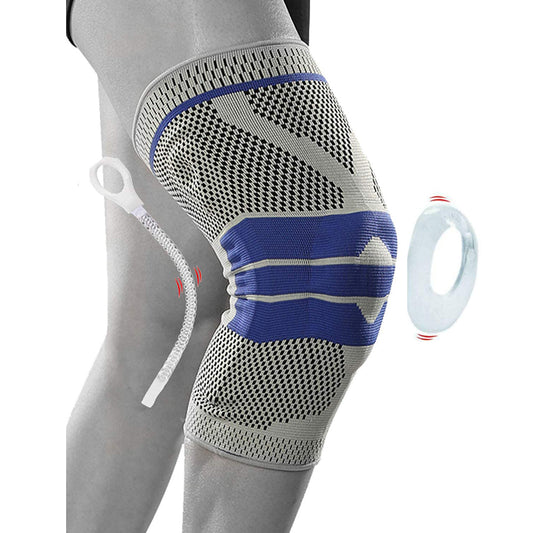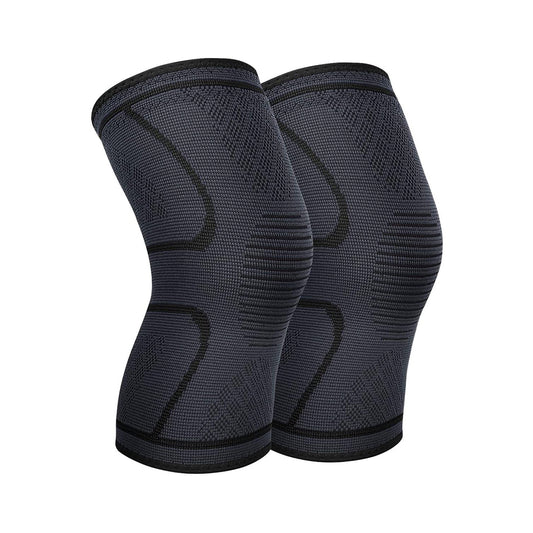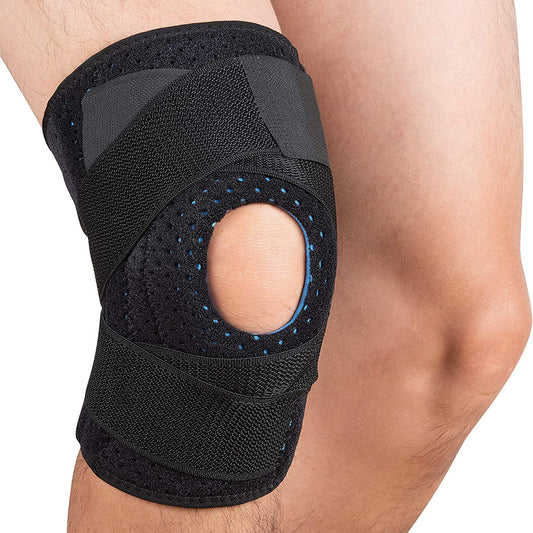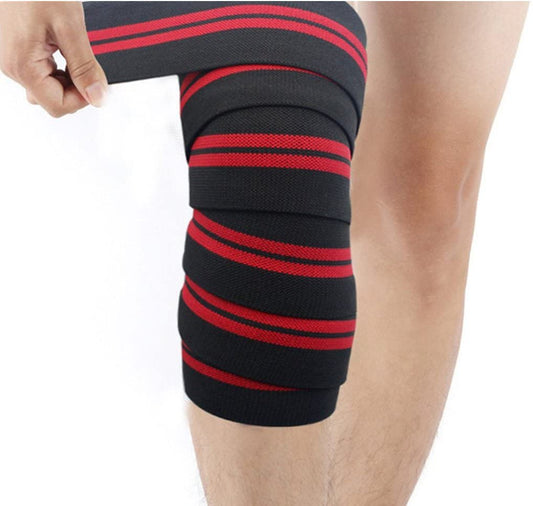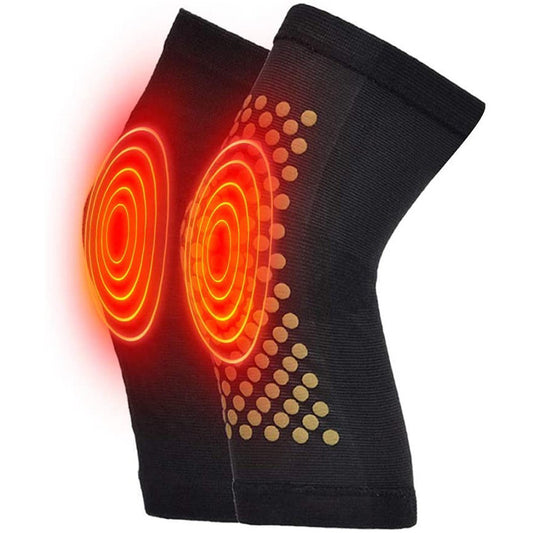-
Professional Knee Brace Compression Sleeve - Best Knee Braces for Men Women, Knee Support Protector for Running, Meniscus Tear, Arthritis, Joint Pain Relief, Sports Injury Recovery
Regular price $17.99 USDRegular price$27.99 USDSale price $17.99 USDSale -
2 Pack Knee Brace, Knee Compression Sleeve Support for Men and Women, Running, Hiking, Arthritis, ACL, Meniscus Tear, Sports
Regular price $20.99 USDRegular price$32.99 USDSale price $20.99 USDSale -
Knee Supports for Men Women - Compression Knee Sleeve for Arthritis Pain Relief Meniscus Tear, Non Slip Knee Support Brace for Running Squats Crossfit Other Sport
Regular price $20.99 USDRegular price$32.99 USDSale price $20.99 USDSale -
Knee Braces with Spring Stabilizers & Gel Patella Pad for Knee Support – Adjustable Compression Wrap for Running, Arthritis, Meniscus, Tear for Men & Women
Regular price $25.00 USDRegular price$56.00 USDSale price $25.00 USDSale -
Knee Wraps Great for Squats, knee brace Weightlifting, Powerlifting, Crossfit, Bodybuilding - 70"L Elastic Wrap Will Support Knees for Heavy Weight Squat and Lifting - Compression Straps for Men and Women
Regular price $13.00 USDRegular price$13.00 USDSale price $13.00 USD -
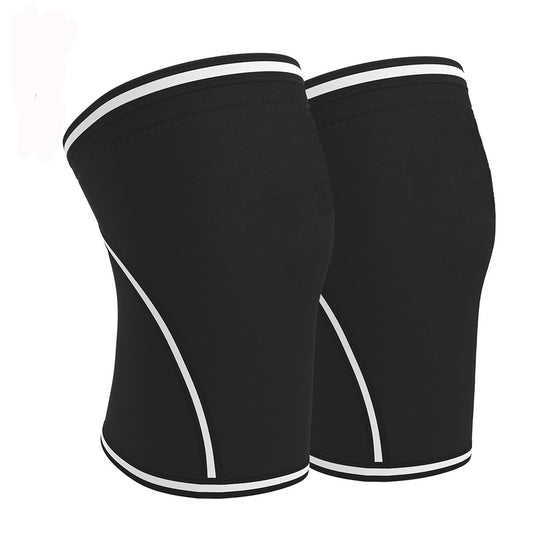
Knee Sleeves (1 Pair),7mm Compression Knee Braces for Heavy-Lifting,Squats,Gym and Other Sports
Regular price $26.00 USDRegular price$36.00 USDSale price $26.00 USDSale -
Professional Knee Brace,Knee Compression Sleeve Support for Men Women Pair Compression Fit Support for Joint Pain and Arthritis Relief
Regular price $20.99 USDRegular price$20.99 USDSale price $20.99 USD -
ZSZBACE Knee Compression Sleeve - Knee Support - For Jogging - For Running - For Exercising
Regular price $20.99 USDRegular price$20.99 USDSale price $20.99 USD -
ZSZBACE Knee Sleeves - 7mm Thick Compression Knee Brace Support for Weightlifting, Powerlifting, Squats & CrossFit Training Fitness for Women and Men, 6 SIZE
Regular price $26.00 USDRegular price$36.00 USDSale price $26.00 USDSale -
Self-warming knee pads, Knee warmers, Warm knee pads, Warmth therapy knee brace, Winter warm knee brace pain relief, for leisure and all kinds of sports - Unisex - 1 pair
Regular price $15.99 USDRegular price$26.00 USDSale price $15.99 USDSale
Collection: Premium Knee Braces for Optimal Support and Injury Prevention
Enhance Your Performance with Our Premium Knee Braces
Knee pain is a common issue faced by athletes, fitness enthusiasts, and even those leading a sedentary lifestyle. It's a discomfort that shouldn't be neglected, as knee injuries can lead to long-term complications such as arthritis or mobility challenges. Our premium knee braces are designed not only to alleviate knee pain but also to enhance performance and prevent injuries.
Who Needs This Product?
If you've experienced any of the following, our knee brace collection may be suitable for you:
- Athletes & Runners: Ideal for individuals engaging in running, hiking, or sports who need additional knee support to tackle rigorous activities.
- Injury-Prone Individuals: Those recovering from ACL tears, Meniscus injuries, or anyone with chronic arthritis can benefit significantly.
- Heavy Lifters: Persons involved in weightlifting or squats will find added stability and protection through our compression braces.
Why You Need This Product
- Protection: Each knee brace offers outstanding protection against further damage during physical activities, reducing the risk of acute injuries.
- Support & Comfort: Provides essential support to weakened joints, prevents instability, and offers comfort with its ergonomic design.
- Injury Rehabilitation: Aids in faster recovery by promoting blood circulation, reducing swelling, and relieving pain.

How to Determine if This Product is Right for You
- Pain Assessment: Frequent knee pain during or after activity may indicate a need for a knee brace.
- Doctor's Recommendation: If a health professional has suggested increased support while recovering from an injury.
- Signs of Instability: Experiencing wobbliness or the sensation of your knee giving way.
Features of Our Knee Braces
- Adjustable Design: Fits a range of sizes and the level of compression can be tailored for comfort.
- Durability and Quality: Made from premium materials with advanced manufacturing techniques, ensuring longevity.
- Spring Stabilizers & Gel Patella Pad: Provides targeted support and promotes optimal knee alignment during movement.
Explore our Knee Sleeves - Ideal for Heavy Lifting and Squats for additional support in the gym or while engaging in focused sports activities.

Common Questions
-
What sports can I use these braces for?
- Our braces are versatile and can be used for running, hiking, basketball, tennis, and more.
-
Are the braces unisex?
- Yes, our design caters to both men and women, ensuring a snug fit for all users.
-
Can the braces be worn all day?
- While they provide excellent support, it's recommended to use them during activity or upon experiencing pain for best results.
Check out more options in our collection — Knee Braces with Spring Stabilizers for Meniscus Tears.
The ZSZBACE Advantage
As a brand with years of expertise, ZSZBACE is dedicated to delivering quality you can trust. Our extensive R&D ensures that each knee brace is crafted from top-notch materials for optimal performance and comfort. Our excellent customer service and professional after-sales support ensure your satisfaction with our products.
By choosing our collection, turn your knee pain trials into stories of triumph, reclaiming your active lifestyle with confidence. Discover our 2-Pack Knee Braces to find the support that meets your needs.

